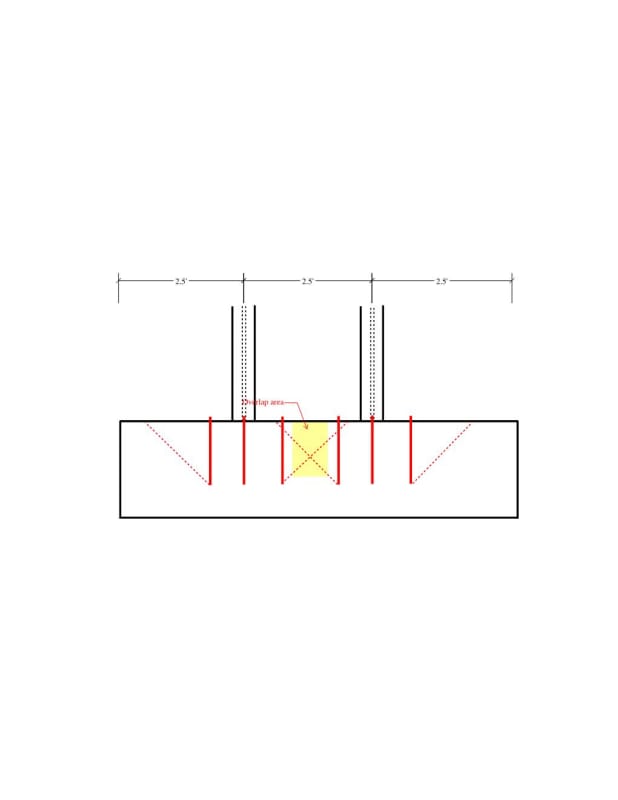BAGW
Structural
- Jul 15, 2015
- 392
Hi,
I have columns with 2’x2’ base plate. There are 6 bolts, 3 on each side of the flange. I need 7’x7’x24’’ footing to get anchor bolt breakout to work.
At the expansion joints, the columns are spaced 2.5’ apart. The concrete break out area for the anchor bolts over lap at the expansion joint as shown in the image. How to deal with such situations? Can this be ignored as there is 6’ of concrete available on either side of overlapped breakout area as to required 3.5’ per single column design.

I have columns with 2’x2’ base plate. There are 6 bolts, 3 on each side of the flange. I need 7’x7’x24’’ footing to get anchor bolt breakout to work.
At the expansion joints, the columns are spaced 2.5’ apart. The concrete break out area for the anchor bolts over lap at the expansion joint as shown in the image. How to deal with such situations? Can this be ignored as there is 6’ of concrete available on either side of overlapped breakout area as to required 3.5’ per single column design.

